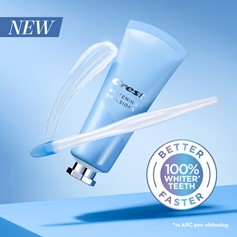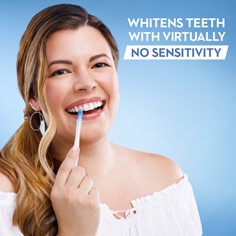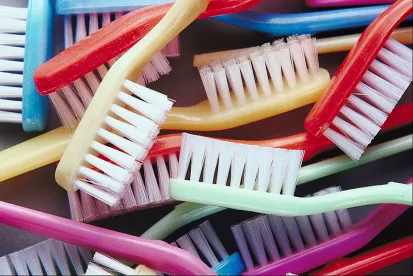In a recent National Advertising Division (“NAD”) proceeding, SmileDirectClub, LLC (“SDC”) challenged The Procter & Gamble Company’s (“P&G”) claims regarding Crest Whitening Emulsions, examples of which are shown below. The NAD found some of the claims substantiated but recommended the advertiser modify or discontinue the remaining claims.
The NAD found that the “100% whiter,” “better,” and “whitens better,” “faster,” and “virtually no sensitivity” claims were substantiated, but recommended that P&G clearly and conspicuously disclose that its own ARC Pen product was the object of comparison. First, the NAD found that P&G successfully showed that Emulsions led to more noticeable benefits than the ARC Pen. Second, because Emulsions achieved more whitening benefits at 15 days than the ARC Pen, the NAD found that it followed that Emulsions necessarily achieved faster results than the ARC Pen. The NAD, however, cautioned P&G against implying that “faster” describes the speed of application and wear time. Third, the NAD concluded that P&G provided reliable evidence to substantiate the “virtually no sensitivity” claim because 97% of users reported no sensitivity, and the claim was qualified by the word “virtually.”


P&G, however, did not provide a reasonable basis for the “best in class results,” “stays on teeth 10x longer,” “starts working instantly” and “whiter smile in seconds,” “stop stains before they set in,” and “delivers 5x more active hydrogen peroxide compared to other whitening gels and pens” claims.
Regarding the “best in class” claim, the qualities P&G focused on as priorities in evaluating whitening products were: “(1) tested and approved by experts, (2) effective, and (3) safe for sensitive teeth.” But the NAD found insufficient evidence that those attributes are prioritized by the industry and consumers over other factors. Moreover, P&G placed Emulsions in a “class” of one. The NAD observed that a “‘class’ of products should be defined consistent with consumers’ reasonable understanding,” and it was “unclear” whether a singular member can claim to be the “best in class.”
Because P&G provided an undated, one-page summary with only basic details of the study on whether Emulsions stays on teeth “10x longer,” the NAD concluded that this claim should also be discontinued.
Further, the NAD found that “starts working instantly” and “whiter smile in seconds” can reasonably be interpreted to mean that consumers will see noticeable changes immediately after application. In reality, the results were not noticeable even as late as day 8.
Further still, the NAD found the claim “stops stains before they set in” conveyed that Emulsions served as a barrier to prevent new stains. Because Emulsions reverses existing stains (rather than preventing new stains), the NAD also recommended that this claim be discontinued or modified.
Finally, the NAD found P&G’s claim that Emulsions “delivers 5x more active hydrogen peroxide compared to other whitening gels and pens” was unsubstantiated. Specifically, P&G failed to present data showing that Emulsions contains five times more overall hydrogen peroxide when compared to other products on the market generally.
P&G agreed to comply with the NAD decision.
SmileDirectClub, LLC v. The Procter & Gamble Company, NAD Case #6906 (May 26, 2021)
Sumaia Tabassum also contributed to this article.




 />i
/>i

